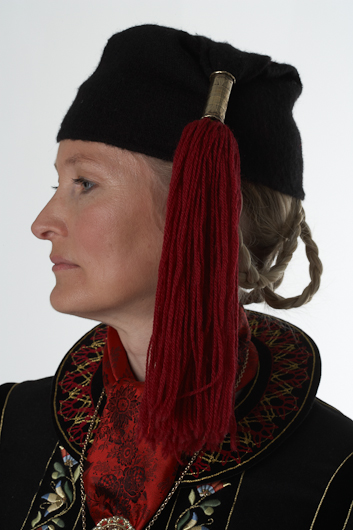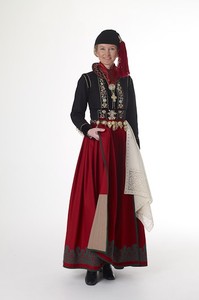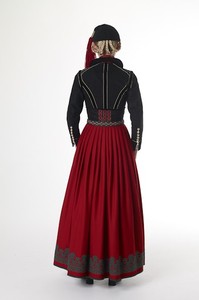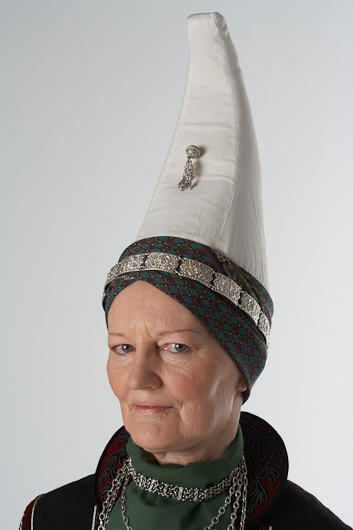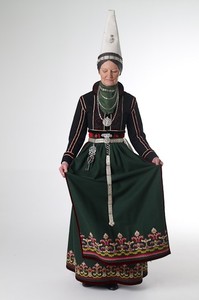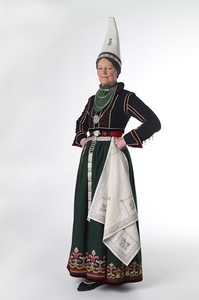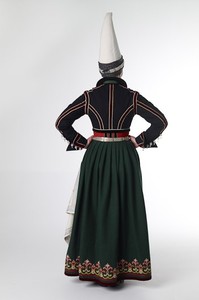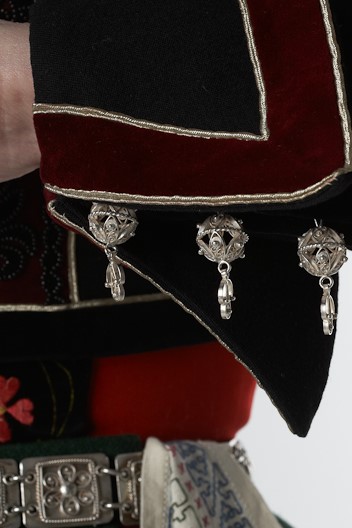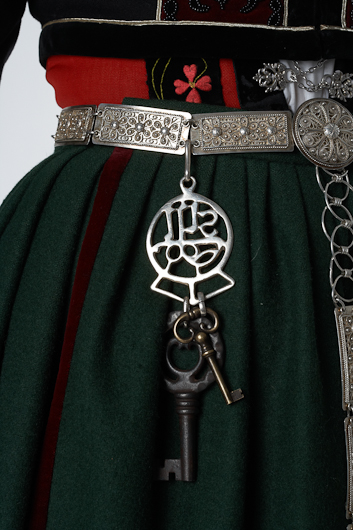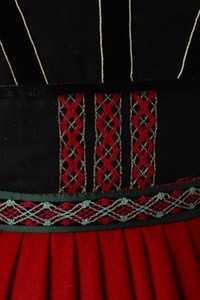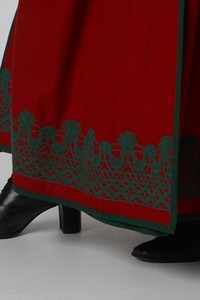18th century costumes faldbúningur
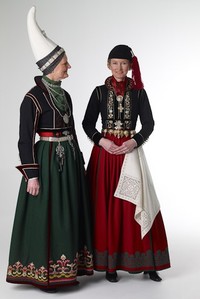 The oldest drawings of Icelandic women depict them wearing the faldbúningur. Examples of such costumes survive from the 18th century. The costume derives its name from the high headdress or faldur, made with several white linen cloths wound around the head and pinned into place, with a scarf of contrasting colour at the bottom. In the 18th century the faldur was shaped into a high curved shape, the krókfaldur. Women wore a chemise, and over it an upphlutur (bodice) of contrasting colour and many petticoats. The upphlutur was sometimes velvet, but otherwise the costume was made of woollen cloth. A short black jacket with long, tightly-fitted sleeves had decorative trim on the back and sleeves. On the plackets there were ribbons of metal-thread, or velvet ribbons ornamented with appliqué, or embroidered in silk or metal-thread. The separate collar was ornamented in the same way. The long skirt might be blue, green, red or black, with a narrow apron of the same length, in the same colour or a different one. Both garments were trimmed at the bottom with velvet, lace or embroidery. The scarf was fastened with a brooch. The costume was worn with a belt, and sometimes necklaces. For everyday wear women used a tasselled cap instead of the faldur headdress.
The oldest drawings of Icelandic women depict them wearing the faldbúningur. Examples of such costumes survive from the 18th century. The costume derives its name from the high headdress or faldur, made with several white linen cloths wound around the head and pinned into place, with a scarf of contrasting colour at the bottom. In the 18th century the faldur was shaped into a high curved shape, the krókfaldur. Women wore a chemise, and over it an upphlutur (bodice) of contrasting colour and many petticoats. The upphlutur was sometimes velvet, but otherwise the costume was made of woollen cloth. A short black jacket with long, tightly-fitted sleeves had decorative trim on the back and sleeves. On the plackets there were ribbons of metal-thread, or velvet ribbons ornamented with appliqué, or embroidered in silk or metal-thread. The separate collar was ornamented in the same way. The long skirt might be blue, green, red or black, with a narrow apron of the same length, in the same colour or a different one. Both garments were trimmed at the bottom with velvet, lace or embroidery. The scarf was fastened with a brooch. The costume was worn with a belt, and sometimes necklaces. For everyday wear women used a tasselled cap instead of the faldur headdress.


